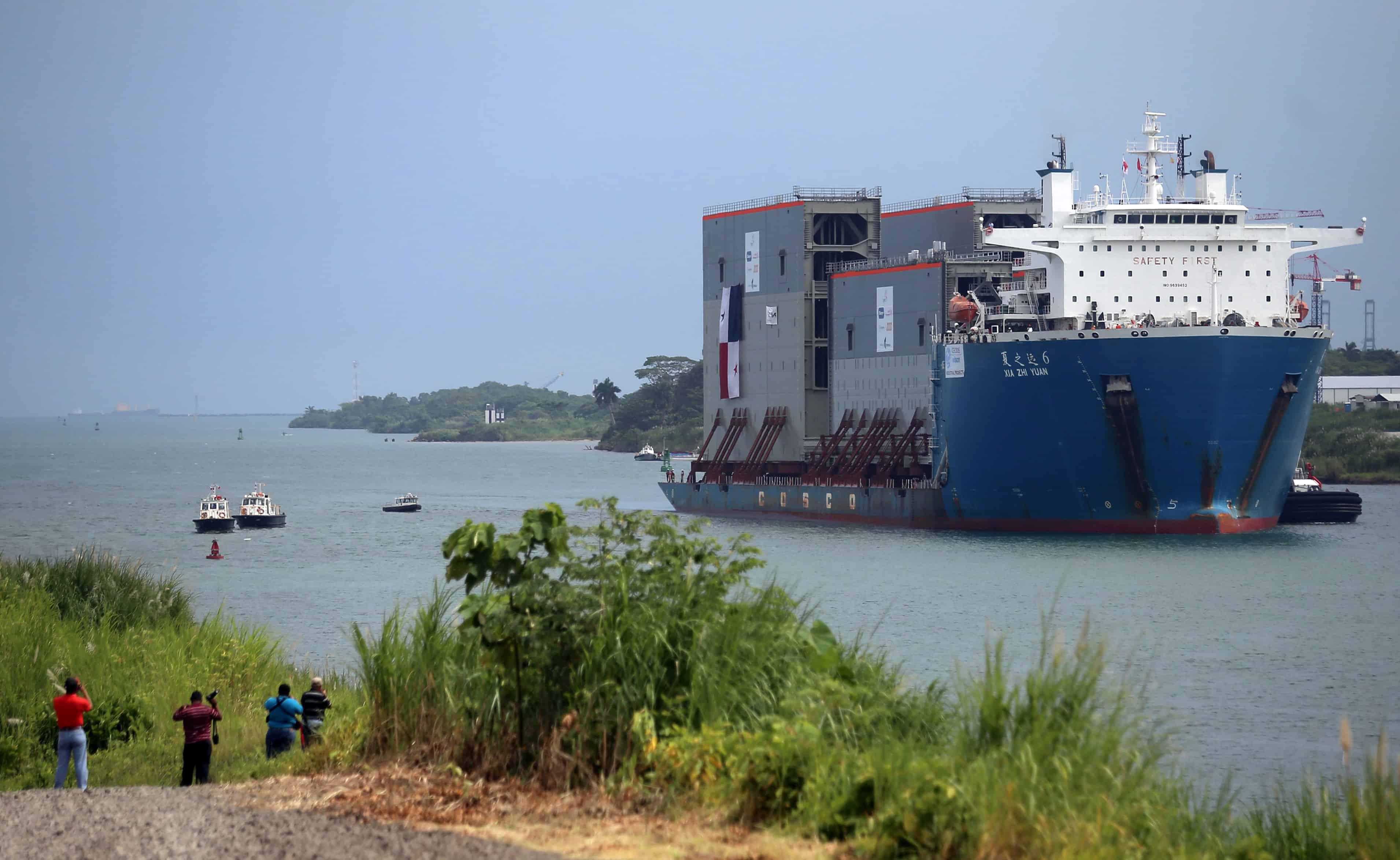Stricken by lack of water, the Panama Canal will maintain restrictions on ship passages for one year, a measure that has congested access to the route used by 6% of global maritime trade.
“Right now we’re looking at a period of one year, unless in September, October and November we get heavy rains in the Canal’s watershed that fill the lakes,” Ilya Espino, deputy administrator of the Panama Canal, said in an interview.
That period allows the customer “to know they have a year to plan what they are going to do,” she added.
The 80-kilometer Panama Canal connects the Pacific Ocean to the Caribbean Sea. The main users of this Panamanian route are the United States, China and Japan, and 6% of global maritime trade passes through it.
The lack of rain, a product of climate change and the El Niño phenomenon, has led the Canal to reduce the number of transits since July 30 to save water.
Whereas some 40 ships used to pass through daily, now only a maximum of 32 can transit. In addition, the canal authority also reduced the draft of ships to 44 feet (13.4 meters), two less than what the route previously allowed.
The reduction in traffic has caused a considerable increase in the number of ships waiting to cross.
Without restrictions, up to 90 ships remained waiting to cross the Canal from both ends. Now there are about 130 waiting this Thursday, a figure that has even reached 160 ships.
The waiting time has also skyrocketed. From the 3 to 5 days that ships used to wait to cross the Canal, with the crisis it has reached 19 days, although it has now dropped to 11.
The Panama Canal is not closed
Ships passing through the Canal book one of the daily slots offered by the route in advance. If the ship has not been able to secure one of those slots, then there is the alternative of going to an auction, where the highest bidder can get one of the slots.
On other occasions, ships arrive at the Panamanian route without any reservation, so they have to wait an indefinite time to be able to pass. Most of the ships that are waiting do not have a reserved slot.
“We easily manage a queue of 90 ships” waiting, but “130 or 140 ships causes problems for us and causes delays,” Espino acknowledges.
According to the deputy administrator of the Canal, if rainfall levels increase by the end of the year, restrictive measures could be lifted before August 2024.
The crisis even led Colombia’s president, Gustavo Petro, to say that the Panama Canal was closed due to drought. His Mexican counterpart, Andrés Manuel López Obrador, also referred this week to the “special” situation the Panamanian route is going through.
“We have a restriction in Panama as we have had on other occasions, but it is not that the Panama Canal is closed, that is not true,” Panama’s president, Laurentino Cortizo, replied on Wednesday.
Panama Canal’s Eternal Eater Problem
The Panama Canal uses rainwater as the energy source that moves ships through the locks, a kind of elevator that raises vessels up to 26 meters above sea level so they can cross the continental mountain range of the isthmus.
About 200 million liters of fresh water are poured out for each ship that crosses the route, which the Canal obtains from a watershed made up of Lake Gatún and Lake Alhajuela.
However, that watershed, which also supplies drinking water to half the country of some 4.2 million people, has been depleted due to lack of rain. To avoid this situation, the Panama Canal Authority is conducting studies to find new water sources.
“We have to find solutions in order to continue being a relevant route for international trade. If we do not adapt, then we will fail,” Canal Administrator Ricaurte Vásquez said recently.
Less Cargo, Less Revenue
The Canal’s measures can have an effect on international trade, since the reduction in draft translates into less cargo capacity per ship and therefore lower revenues for Panama from toll payments.
Forecasts, according to Espino, indicate that for next year the number of tons transiting the Canal will be “less than 500 million,” compared to 518 million in the past year.
In addition, a drop in revenues of around $200 million is expected. Last year the Canal collected over $3 billion in tolls. “The impact on global trade figures, as it is a one-year situation, I don’t think it will be worse than what the COVID pandemic was,” Espino said.






